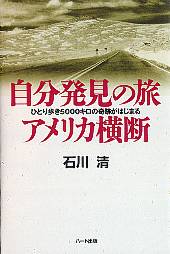|
GOVERNMENT DOCUMENTS
“General Arrangement Plans: USS Bunker Hill.”
“Imperial Rescript for Soldiers and Sailors.” Imperial Precepts, 1882.
“Report of Operations of Carrier Air Group Eight Based Aboard USS Bunker Hill (CV17).” March 15.October 26, 1944.
“The USS Bunker Hill: The Record of a Carrier’s Combat Action Against the Axis Nations in the Pacific.” U.S. Department of the Navy, 1944.
“The USS Bunker Hill Report of Changes,” filed on 28 May, 1945
Anonymous. “Pilot’s Handbook of Flight Operating Instructions for Navy Models F6F-3, F6F-3N, F6F-5, F6F-5N Airplanes.” Date unknown.
Anonymous. “World War II Histories and Historical Reports in the US Naval History Division.” 1997.
Deane, J. R., and F. B. Royal. “Report on Operations in the Pacific and Far East in 1943.44.” 1973.
Levy, E. S. (Carrier Air Group Air Intelligence Officer). “Report of Operations of Carrier Air Group Eight Based Aboard the USS Bunker Hill (CV17), 15 March 1944 to 26 October 1944.” 1944.
National Defense Research Committee. “Weapon Data: Fire Impact Explosion.” 1945.
Naval Analysis Division. United States Strategic Bombing Survey (Pacific). Washington, D. C.: U.S. Government Printing Office, 1946.
Naval History Division. Dictionary of American Naval Fighting Ships. Washington, D.C.: Navy Department, 1959.
The Office of the Chief of Naval Operations. “U.S. Naval Aviation in the Pacific.” United States Navy, 1947.
Operational Archives, U.N.H.C. “Microfilm Publication 3: Bulletins of the Intelligence Center, Pacific Ocean Areas, Joint Intelligence Center, Pacific Ocean Area and the Commander in Chief Pacific and Pacific Ocean Area 1942.1946.” Edited by anonymous, 1994.
Photographs in the Still Picture Collection at the National Archives.
Song and Service Book for Ship and Field: Army and Navy. New York: A. S. Barnes, 1942.
The United States Government. “USS Bunker Hill Awards.” Edited by anonymous, 1945.
The United States Joint Intelligence Committee. “Japan’s Secret Weapon: Suicide.” 1945.
The United States Strategic Bombing Survey. “Summary Report: Pacific War.” Washington, D.C.: U.S. Government Printing Office, July 1, 1946.
The United States Strategic Bombing Survey. “The Effects of Strategic Bombing on Japan’s War Economy.” Washington, D.C.: U.S. Government Printing Office, December 1946.
The United States Strategic Bombing Survey. “Final Reports of the United States Strategic Bombing Survey 1945.1947.” 1977.
BOOKS
Appleman, Roy Edgar. Okinawa: The Last Battle. Washington, D.C.: Historical Division, Department of the Army, 1948.
Balch, Donald. In the Ready Room: KAMIKAZE!
Baldwin, Frank, et al. “The Saga of the Fighting Falcons: Marine Fighter Squadron 221,” 2003.
Barker, A. J. Suicide Weapon. London: Pan/Ballantine, 1971.
Barker, Ralph. The Hurricats. London: Pelham, 1978.
Bennett, Charles. Ojai Valley’s Veterans Stories: Veterans Stories of the Ojai Valley Veterans of Foreign Wars, Post 11461. Committee Communications, 2002.
Black, Allida, et al. The Eleanor Roosevelt Papers.Raymond Clapper. Hyde Park, NY: Eleanor Roosevelt National Historical Site, 2003.
Brinkley, Alan. The Unfinished Nation: A Concise History of the American People. New York: Alfred A. Knopf, 1997.
Brokaw, Tom. The Greatest Generation. New York: Delta/Random House, 2001.
Bryan III, J. Aircraft Carrier. New York: Ballantine, 1954.
Calhoun, Raymond C. (Captain). Typhoon: The Other Enemy. Annapolis: Naval Institute Press, 1981.
Canterbury, C. Clapper. Descendants. Edited by anonymous. Cathy Canterbury, 2001.
Chihaya, M. (trans.), and Dillon Goldstein. Fading Victory: The Diary of Admiral Matome Ugaki, 1941.1945. Pittsburgh: University of Pittsburgh Press, 1991.
Clapper, Raymond. Watching the World, 1934.1944. London: Whittlesey House, 1944.
Cressman, R. J. The Official Chronology of the US Navy in World War II. Edited by anonymous, 2004.
Decade of Triumph: The 40s. Alexandria, VA: Time-Life Books, 1999.
Donovan, Robert J. PT 109: John F. Kennedy in World War II. New York: McGraw-Hill, 1961.
Edwards, Bernard. Blood and Bushido: Japanese Atrocities at Sea, 1941.1945. 2nd ed. (1st ed., 1991). New York: Brick Tower Press, 1997.
Faltum, Andrew. The Essex Aircraft Carriers. Baltimore: The Nautical and Aviation Company of America, 1996.
Ferry, Charles. Raspberry One. Boston: Houghton Mifflin, 1983.
Francillon, Rene J. Japanese Aircraft of the Pacific War. Annapolis: Naval Institute Press, 1970.
Friedman, Norman. U.S. Aircraft Carriers: An Illustrated Design History. Annapolis: Naval Institute Press, 1983.
Greer, Captain Marshal R., USN (director). The USS Bunker Hill, November 1943.November 1944: The Record of a Carrier’s Combat Action Against the Axis Nations in the Pacific. Chicago & Dixon: Rogers Printing Co., 1945.
A Guide to the Reports of the United States Strategic Bombing Survey. London: Royal Historical Society, 1981.
Hoyt, Edwin P. The Carrier War. New York: Avon, 1987.
The Kamikazes. New Jersey: Buford, 1999.
The Last Kamikaze: The Story of Admiral Matome Ugaki. Westport, CT: Praeger, 1993.
Leyte Gulf. New York: Avon, 1972.
McCampbell’s Heroes: The Story of the U.S. Navy’s Most Celebrated Carrier Fighters of the Pacific War. New York: Van Nostrand Reinhold, 1983.
The Men of Gambier Bay. New York: Avon, 1981.
Ichinose, Tomoji. Theories and Practices of Mixed Economy Systems: A Comparative Look at the Japanese Experience. Tokyo: Research Institute of Public Management, 1996.
Inoguchi, Rikihei, and Tadashi Nakajima. Divine Wind: Japan’s Kamikaze Force in World War II. Annapolis: United States Naval Institute, 1958.
Johnston, Stanley. Queen of the Flat-Tops. New York: E. P. Dutton, 1942.
Jones, Ken, and Hubert Kelley, Jr. Admiral Arleigh (31-Knot) Burke: The Story of a Fighting Sailor. Philadelphia: Chilton, 1962.
Kahn, E. J. The Stragglers. New York: Random House, 1962.
Lamont-Brown, Raymond. Kamikaze: Japan’s Suicide Samurai. London: Arms and Armour Press. 1977.
Lord, Walter. A Night to Remember. New York: Holt, Rinehart Winston, 1955.
MacArthur, Douglas. Reminiscences. New York: McGraw-Hill, 1964.
Maloney, Tom. U.S. Navy War Photographs.Pearl Harbor to Tokyo Bay. New York: Bonanza, 1984
Maraini, Fosco. Meeting with Japan, 2nd ed. New York: Viking, 1969.
Markey, Morris. Well Done! An Aircraft Carrier in Battle Action. New York: D. Appleton-Century, 1950.
Matsunaga, Ichiro, Kan Sagahara, and Gordon J. Van Wylen. Encounter at Sea and a Heroic Lifeboat Journey. Troy: Sabre, 1994.
Mayer, S. L., ed. The Rise and Fall of Imperial Japan: 1894.1945. New York: Military Press, 1984.
Millot, Bernard. Lowell Blair, trans. Divine Thunder; The Life and Death of the Kamikazes. New York: McCall, 1971.
Nagare, Masayuki. The Life of a Samurai Artist. New York: Weatherhill, 1994.
Nagatsuka, Ryuji. Nina Rootes, trans. I Was a Kamikaze: The Knights of the Divine Wind. London: Abelard-Schuman, 1972.
Naito, Hatsuho. Thunder Gods: The Kamikaze Pilots Tell Their Story. New York: Kodansha International, 1989.
Nichols, David, ed. Ernie’s War: The Best of Ernie Pyle’s World War II Dispatches. New York: Random House, 1986.
Office of the Chief of Naval Operations. U.S. Naval Aviation in the Pacific. United States Navy, 1947.
Office of the Chief of Naval Operations, Naval History Division. United States Naval Chronology: World War II. Washington, D.C.: U.S. Government Printing Office, 1955.
Ofstie, R. A. The Campaigns of the Pacific War: United States Strategic Bombing Survey (Pacific).Naval Analysis Division. Washington, D.C.: U.S. Government Printing Office, 1946.
Olds, Robert. Helldiver Squadron: The Story of Carrier Bombing Squadron 17 with Task Force 58. New York: Dodd, Mead, 1944.
Omura, Bunji. The Last Genro.Rince Saionji: The Man Who Westernized Japan. Philadelphia: J. B. Lippincott, 1938.
O’Neill, Richard. Suicide Squads: WWII.Axis and Allied Special Task Weapons of World War II: Their Development and Their Missions. New York: St. Martin’s Press, 1982.
Overy, Richard. Why the Allies Won. New York: W. W. Norton, 1995.
Pawlowski, Gareth L. Flat Tops and Fledglings: A History of American Aircraft Carriers. New York: Castle, 1971.
Phillips, Christopher. Steichen at War. New York: Portland House, 1981.
Pinguet, Maurice. Voluntary Death in Japan. Cambridge, MA: Polity Press, 1993.
Polman, Norman. Aircraft Carriers: A Graphic History of Carrier Aviation and Its Influence on World Events. Garden City: Doubleday, 1969.
Popp, Wilbert P. “Beads.” The Survival of a WWII Navy Fighter Pilot.
Raven, Alan. Essex-Class Carriers. Annapolis: Naval Institute Press, 1988.
Reynolds, Clark G. The Fast Carriers: The Forging of an Air Navy. Annapolis: Naval Institute Press, 1982.
Roberts, John. The Aircraft Carrier Intrepid. Annapolis: Naval Institute Press, 1982.
Sakai, Saburo, with Martha Caidin and Fred Saito. SAMURAI! New York: Doubleday, 1957.
Sakamoto, Kerri. One Hundred Million Hearts. New York: Alfred A. Knopf, 2003.
Schafer, Ronald. Wings of Judgment: American Bombing in World War II. New York: Oxford University Press, 1985.
Sears, Stephen W. Carrier War in the Pacific. New York: American Heritage, 1966.
Seward, Jack. Hara-Kiri: Japanese Historical Suicide. Rutland: Charles E. Tuttle, 1969.
Shimizu, Tsukasa. Waseda University: A Photographic History of 100 Years (1882.1982). Tokyo: Waseda University, 1982.
Sides, Hampton. Ghost Soldiers. New York: Doubleday, 2001.
Sledge, E. B. With the Old Breed.At Peleliu and Okinawa. New York: Oxford Unversity Press, 1990.
Smith, Martin Cruz. December 6. New York: Simon & Schuster, 2002.
Smith, Michael C. Essex Class Carriers in Action. Carrollton, TX: Squadron Signal Publications, date unknown.
Smith, Peter C. The History of Dive Bombing. Annapolis: The Nautical Aviation Publishing Company, 1982.
Spector, Ronald H. Eagle Against the Sun: The American War with Japan. New York: Free Press, 1985.
Spurr, Russell. A Glorious Way to Die: The Kamikaze Mission of the Battleship Yamato, April 1945. New York: Newmarket, 1981.
St. John, Philip A. USS Essex CV/CVA/CVS-9. Kentucky: Turner, 1999.
Stanton, Doug. In Harm’s Way: The Sinking of the USS Indianapolis and the Extraordinary Story of Its Survivors. New York: Henry Holt, 2001.
Steichen, Edward, ed. U.S. Navy War Photographs: Pearl Harbor to Tokyo Harbor. New York: US Camera.
Tillman, Barrett. Helldiver Units in World War II. London: Osprey, 1997.
Toland, John. The Rising Sun: The Decline and Fall of the Japanese Empire, 1936.1945. New York: Random House, 1970.
Treanor, Tom. One Damn Thing After Another. Garden City: Doubleday, Doran, 1944.
Tsunoda, Ryusaku, Wm. Theodore de Bary, and Donald Keene, eds. Sources of Japanese Tradition, Volumes I and II. New York: Columbia University Press, 1958.
Turnbull, S. R. The Samurai: A Military History. New York: Macmillan, 1977.
Turnbull, Stephen. The Samurai Sourcebook. London: Arms and Armour Press, 1998.
Udoff, Irv. The Bunker Hill Story. Paducah, KY. Turner, 1994.
Uhnuki-Tierney, Emiko. Kamikaze, Cherry Blossoms, and Nationalisms: The Militarization of Aesthetics in Japanese History. Chicago: University of Chicago Press, 2002.
The United States Government Printing Office. Handbook of Japanese Explosive Ordnance. Washington D. C.: U.S. Government Printing Office, 1945.
United States Navy. The Bluejacket’s Manual, Eleventh Edition. Annapolis: United States Naval Institute, 1943.
United States Navy. The Bluejacket’s Manual, Twelfth Edition. Annapolis: United States Naval Institute, 1944.
Vanneman, B. “Who We Are.---September 2003 The Planet Newsletter--- Sierra Club---Lloyd Tupling.” The Planet Newsletter, edited by anonymous, Sierra Club, 2003.
Warner, Denis, Peggy Warner, and Sadao Seno. The Sacred Warriors: Japan’s Suicide Legions. Cincinnati: Van Nostrand Reinhold, 1982.
White, William Lindsay. They Were Expendable. New York: Harcourt, Brace, 1942.
Winton, John. War in the Pacific: Pearl Harbor to Tokyo Bay. New York: Mayflower, 1978.
Woodward, C. Vann. The Battle for Leyte Gulf. New York: Ballantine, 1947.
Yokuta, Yutaka, and Joseph D. Harrington. The Kaiten Weapon. New York: Ballantine, 1962.
Yoshimura, Akira. One Man’s Justice. San Diego: Harvest Harcourt, 1978.
ACADEMIC PUBLICATIONS
“Countering Suicide Terrorism: An International Conference.” The International Policy Institute for Counter-Terrorism at the Interdisciplinary Center Herzliya Conference, February 20.23, 2000.
Dale, Stephen Frederic. “Religious Suicide in Islamic Asia: Anticolonial Terrorism in India, Indonesia, and the Philippines.” Journal of Conflict Resolution, date unknown.
Gordon, Harvey. “The ‘Suicide’ Bomber: Is It a Psychiatric Phenomenon?” Psychiatric Bulletin, No. 26, 2002.
Kushner, Harvey W. “Suicide Bombers: Business as Usual.” Studies in Conflict and Terrorism, No. 19, 1996.
Luft, Gal. “The Palestinian H-Bomb: Terror’s Winning Strategy.” Foreign Affairs, 2002.
Rapoport, David C. “Fear and Trembling: Terrorism in Three Religious Traditions.” American Political Science Review, No. 78, 1984.
Taylor, Maxwell, and Helen Ryan. “Fanatics, Political Suicide and Terrorism.” Terrorism, 1988.
NEWSPAPERS, MAGAZINES, AND JOURNALS
Adams, Steve. “Memorial Day Observances; Marine Killed in Vietnam Is Honored.” Patriot Ledger, May 26, 1998.
“Add Three Stars to Your Ribbons.” The Monument, No. 2, 1944.
Ash, Timothy Garton. “Is There a Good Terrorist?” New York Review of Books, Vol. XL VIII, 2001.
“Aviation Celebration.” New Hampshire Sunday News, September 23, 2001.
“Aviator Faced Danger Many Times but Came Home.” Orlando Sentinel, 1999.
“Beaverton High School.” The Hummer, 1977.
Bergstein, Brian. “WWII Relics Returned; Suicide Pilot’s Effects Found in Kansas Garage.” Associated Press, San Francisco, March 30, 2001.
Bermann, R. B. “Bunker Hill Now in Bremerton Yard.” Seattle Post Intelligencer, June 27, 1945.
“Bombed Out.After Seeing Action at Iwo Jima.” Baltimore News Post, August 1945.
Brown, Matthew. “Veterans with Bond Meet 50 Years Later.” Hartford Courant. November 11, 1995.
“Bunker Hill Lives Through Fiery Ordeal.” Associated Press, June 28, 1945.
“Bunker Hill Makes Her Last Cruise.” Associated Press, date unknown.
Burke, Rear Admiral A. A. “Character” (speech.1952), Washington, D.C., Navy Yard.
Burke, Arleigh A. “Arleigh A. Burke.Transcribed Narratives.” 2003.
Burrows, Leo H. “Rebel Leader, Hostilities Have Ceased.” Naval History, July/August, 1995.
“Carrier Hit by Suicide Planes, Toll 656.” New York Daily Mirror, June 28, 1945.
“Carrier Smash Horrible Sight.” I.N.S., date unknown. Casey, Gene R. “373 Navy Men Died as Jap Planes Made Carrier Bunker Hill a Torch.” Boston Daily Globe, 1945.
“Casualties Total 656.” Associated Press, June 27, 1945.
“Chaplain Fought Flames for 11 Hours.” Boston Globe, date unknown.
Clapper, Raymond. “Their Skipper.” Date unknown.
“Commodore Seitz Dead in Honolulu: Military Governor of Marshall Islands Was Wartime Chief of Carrier Bunker Hill.” New York Times, 1947.
“Cool Heroism Saves the Ship.” New York Daily Mirror, June 28, 1945.
“Daughter of Air Hero Awarded Medals by Navy.” Date unknown.
“Design Histories of United States Warships of World War II, the Essex Class (Part 1).” Warship International, 1999.
Dudley, Kristine. “Purple Heart Recipient Writes About Fateful Day.” Tulsa World, 2000.
Dunne, John Gregory. “The Okinawa Nightmare.” New York Review of Books, Vol. 48, 2001.
Edwards, Greg. “2 Recall Their Final, Terrible Day on U.S.S. Bunker Hill.” Roanoke Times and World News, May 29, 1995.
Egelko, Bob. “Kamikaze Pilot’s Keepsakes Finally Find Way to His Family.” San Diego Union Tribune, 2001.
Epstein, Aaron. “Former Justice White Dies at 84.” Baltimore Sun, April 16, 2002.
“Famed Bunker Hill Reaches Seattle.” Seattle Post-Intelligencer, October 24, 1945.
“Flyers in Truk Raid Pass Thru Chicago.” Chicago Daily Tribune, 1944.
“Fremont Youths Enter Service.” Periodical and date unknown.
Gault, Owen, and Robert Olds. “Start Engines: The Saga of the Bunker Hill.” Air Classics, date unknown.
“Gilberto. Frank Gilberto.” Hartford Courant, September 17, 1997.
Goldin, D. “Raymond Clapper.” Edited by anonymous, Radio Gold Index, 2004.
“Harold Posey on Leave from Navy.” Date unknown.
“Harold Posey Spending 30-Day Leave in States.” Date unknown.
Houle, Barbara. “King of the Castle.” Telegram & Gazette. May 13, 1998.
Imel, Blaine. “Purple Heart Recipient Writes About Fateful Day.” Your Community World, January 5, 2000.
“Income Tax Returns.” The Monument, No. 1, 1943.
“Irvin Udoff Attached to Carrier.” The Guide, October 25, 1945.
“Jap Bombs Kill 373 on Big U.S. Carrier.” Seattle Post-Intelligencer, 1945.
“Japs Blast Flagship Carrier; 373 Die.” Daily News, 1945.
“Japanese Suicide Planes Scored Two Direct Bomb Hits on the Carrier Bunker Hill.” Associated Press, June 27, 1945.
“Kamikaze’s Items Returned.” Associated Press, date unknown.
Kapur, N. “Cato and His Heirs: Roman Ideas of Suicide.” Edited by anonymous, 2000.
“Divine Winds and Ancient Heroes: Reconstructing Kamikaze Ideology.” Edited by anonymous, 2002. Roanoke Times and World News.
“Knot Burke Dead at 94.” United Press International, January 1, 1996.
“Local Boys Safe on Carrier.” Daily Evening Item, 1945.
“Local Vet Honored with 7 Medals.” The Herald, 1995.
Manson, Frank A. “ ‘Get the Yamato!’ The Sinking of Japan’s Last Super-Battleship.” Sea Classics, No. 30, 1997.
“Mitscher’s Carrier Blasted; 392 Lost.” Los Angeles Examiner, 1945.
Mozai, Torao. “The Lost Fleet of Kublai Khan.” National Geographic. No.162, 1982.
Narvis, Marion. “Flier Who Helped Sink Her Says Yamato Was Helpful.” Honolulu Star-Bulletin, 1945.
“1945: The Year in Pictures, May 9.September 2.” Life, June 5, 1995.
Nolte, Carl. “Doing His Duty.” San Francisco Chronicle, March 29, 2001.
“Notes from the Globe.” Boston Daily Globe. June 28, 1945.
“Obituary of Commander Charles Owen.” The Daily Telegraph, October 24, 2001.
Orr, Jack. “The Holiday Express: U.S.S. Bunker Hill’s Run to Glory.” Date unknown.
“Over Japan.” Recognition Journal.
Owen, Joseph. “WWII Sub Officer, Torpedoed Officer Collaborate on Book.” Pacific Stars and Stripes, 1996.
“Posey Boys Met in South Pacific Port.” Date unknown.
Powers, Thomas. “The Trouble with the CIA.” New York Review of Books, Vol.49, No.1, 2002.
Public Information Office. “Captain of USS Bunker Hill Stresses Need of Speedy Repair of Battle Damage.” Edited by anonymous, 1945.
“Relics Return to Kamikaze’s Family.” Dallas Morning News, 2001.
Reynolds, H. K. “392 Die on Huge Carrier Bunker Hill.” Daily Record, 1945.
Riley, Pat. “Reunion Brings Rejoicing, Remorse.” The Enterprise, 1989.
Rodman, Robert. “Psychoanalysis in the Twenty-first Century: A Moment of Reflection.” University of Sao Paolo, April 6, 2002.
Sanders, Jacquin. “50 Years Ago.Okinawa.The Last Battlefield.” St. Petersburg Times, April 2, 1995.
Sasaki, M. “Who Became Kamikaze Pilots, and How Did They Feel Towards Their Suicide Mission?” Concord Review, 1997.
Skacan, Edmund. “Editorial: Letters to the Editor.‘Mercy Is a Wartime Virtue.’ ” Pittsburgh Post-Gazette, November 5, 2001.
Staff writer. “Raymond Clapper.” New York Times, 1944.
Staff writer. “Obituary.Mark R. Clapper.” Daily Star Online, 2003.
Stokes, C. Ray. Bunker Hill’s Airmen Brought Down 100 Jap Planes Before Carrier Put Out of Action.” Lewiston Evening Journal, 1945.
Stork, Joe. “Erased in a Moment: Suicide Bombing Attacks Against Israeli Civilians.” Publication unknown, 2002.
“Survivors in Rites Aboard Bunker Hill.” Date unknown.
“Swords into Ploughshares.” News from Hope College, 1994.
“The German People.” Life, 1945.
Tuppling, LIoyd. “Aboard Vice Admiral Marc A. Mitscher’s Flagship.” United Press International, date unknown.
“373 Killed! 264 Wounded!” Associated Press Wire Photos, June 27, 1945.
“373 Killed, 263 Wounded, and 19 Lost.” Seattle Times, 1945.
“2 Jap Fliers Take 656 Toll on Carrier.” Boston Herald, 1945.
“Two Posey Boys in the Navy.” Date unknown.
Udoff, Irving. “The Sailor Behind the Photo.” Proceedings, May 1995.
“We’ve Been Hit!” The Guide, date unknown.
“With the Armed Forces: News and Gossip of Marylanders in U.S. Services. The Guide, 1945.
“U.S. Carrier Blasted!” Los Angeles Times, 1945.
VanOrman, Bill. “The Battle for the Bunker Hill,” 43-65.
“The Holiday Express & The Battle for the Bunker Hill.” Sea Classics, No. 6, 1973.
Vogel, Steve. “For Navajos, an Award of Gratitude.” Washington Post, 2001.
Walker, Dana Sue. “Architect Imel Honored with OU Professorship.” Tulsa World, June 14, 1999.
Walker, Tom. “Wartime Reading.” News-Journal, 2004.
“Walker Knapp Home from Sea with Five Battle Stars.” Date unknown.
Weinberg, Steven. “Can Missile Defense Work?” New York Review of Books, Vol. 49, 2002.
Whitely, Peyton. “Slow Death for a Carrier.” New York Times, date unknown.
Wilson, Col. Randy. “The Final Stepping Stones.” United States Naval Institute: History, June 1995.
Woll, Lt.(jg) Martin P. “Kamikaze.” Wings of Gold, 1997.
“Kamikaze.” Foundation, Spring 1997.
“Breeches-Buoy: AKA Bosun’s Chair.” Fox Tales, July 2002.
“World War II Warlord Remembers Air Battles with Japanese.” Department of Defense, February 14, 1997.
Yoshida, Mitsuru. “The End of the Yamato.” United States Naval Institute Proceedings, No. 78, 1952.
|
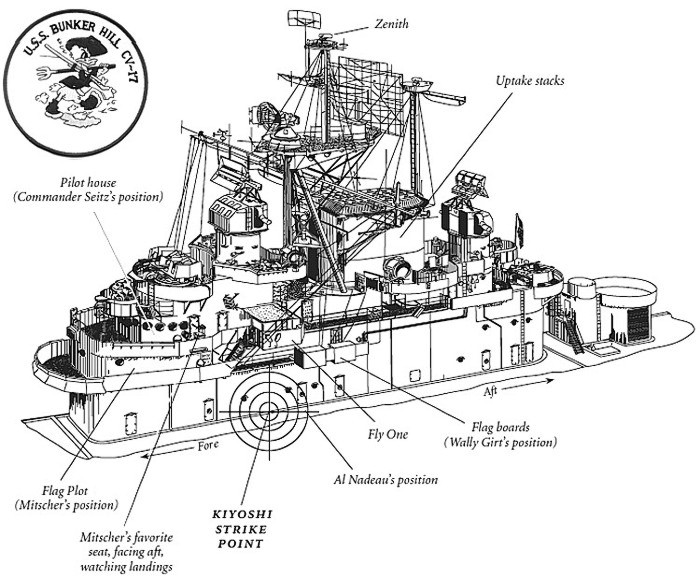
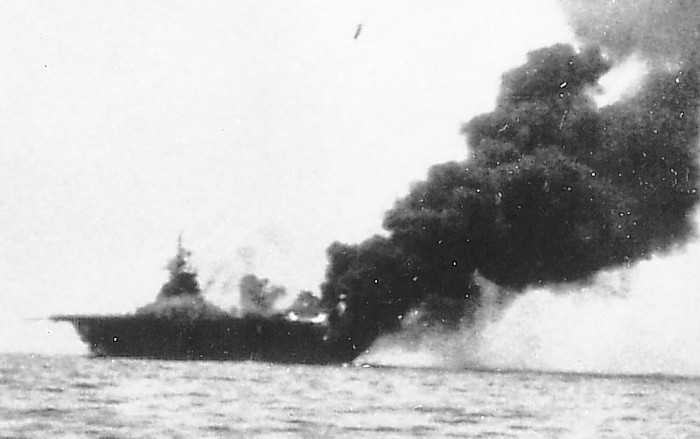
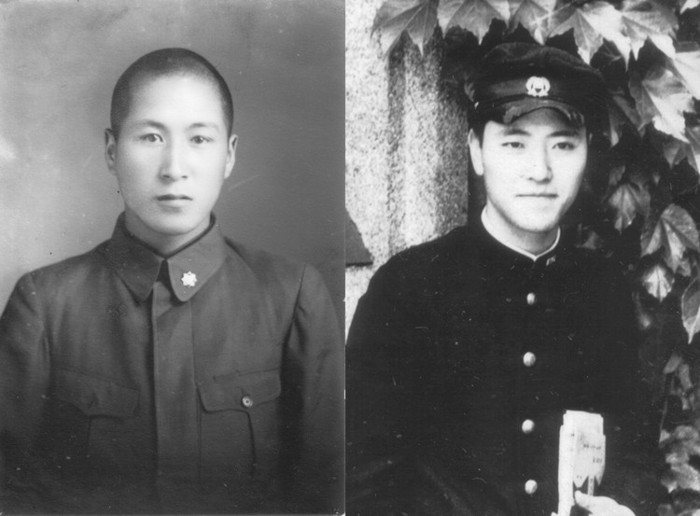
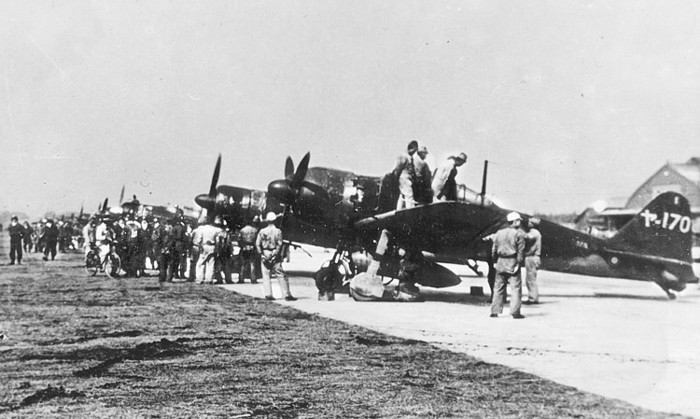
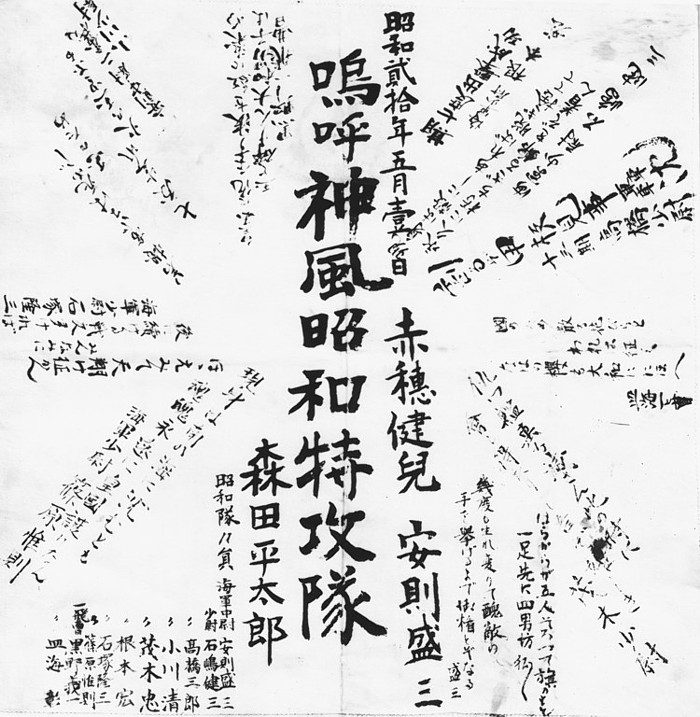
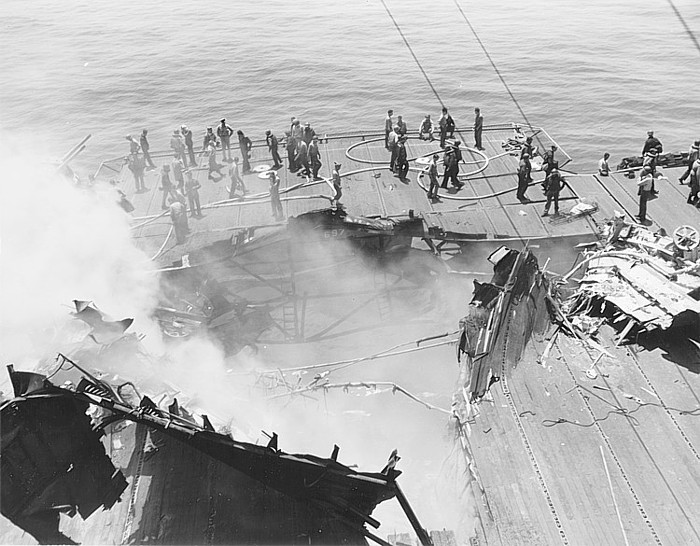
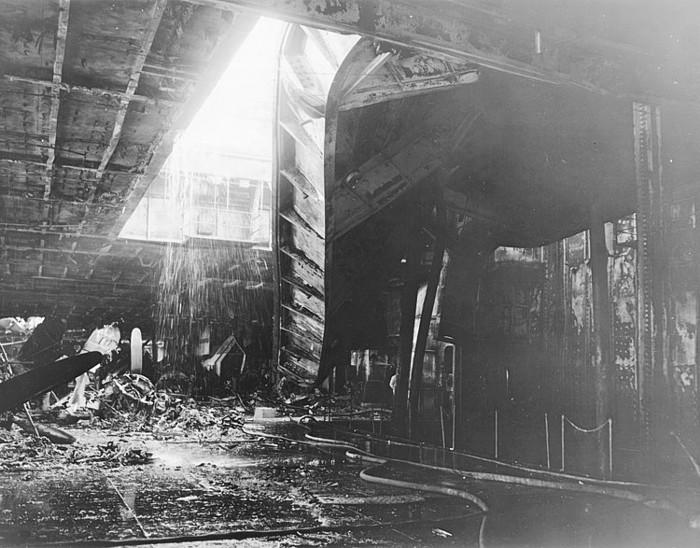
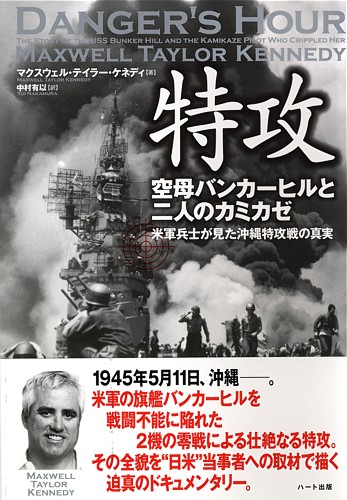
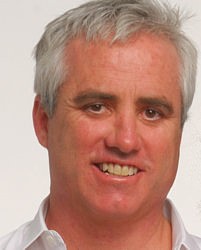 1965 年、ニューヨーク生まれ。ロバート・F・ケネディ元司法長官の息子であり、ジョン・F・ケネディ元大統領の甥にあたる。ハーバード大学、バージニア大学法科大学院を卒業後、ボストンカレッジで環境学を教え、フィラデルフィアでは3年間、検察官を務めた。現在はブラウン大学ジョン・カーター・ブラウン図書館の研究員として、海洋史の研究に打ち込んでいる。
1965 年、ニューヨーク生まれ。ロバート・F・ケネディ元司法長官の息子であり、ジョン・F・ケネディ元大統領の甥にあたる。ハーバード大学、バージニア大学法科大学院を卒業後、ボストンカレッジで環境学を教え、フィラデルフィアでは3年間、検察官を務めた。現在はブラウン大学ジョン・カーター・ブラウン図書館の研究員として、海洋史の研究に打ち込んでいる。


